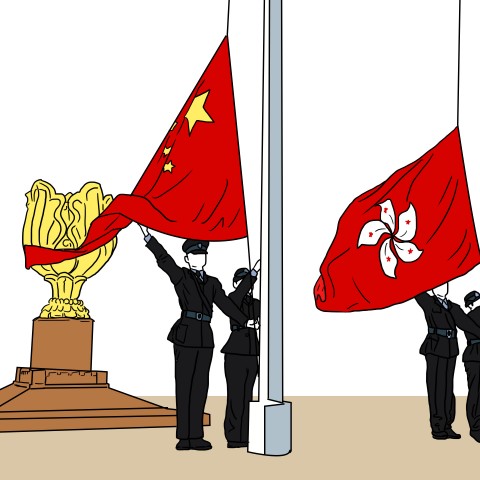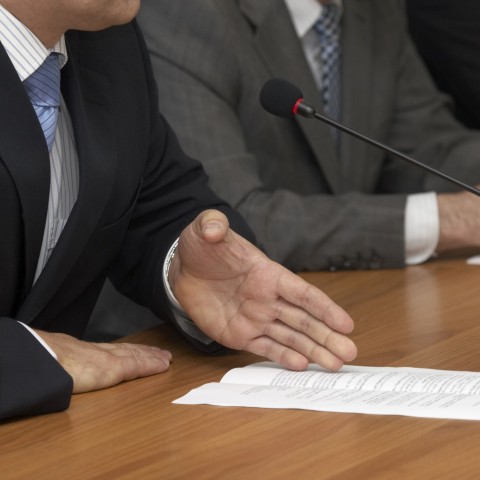When did Hong Kong go back to China?
For Hong Kong, 1997 is one of the most significant years in its history; this is the year that British Hong Kong was reunified with China after many years of British rule. In the article, we’ll be discussing the Hong Kong protests, go more into the history of the question “When was Hong Kong given back to China?” and tell you about the day following Hong Kong Special Administrative Region Establishment Day.
In learning about this important holiday in Hong Kong, you’re allowing yourself to better understand the full extent of its culture. With this knowledge in mind, you’re also more likely to succeed in your Cantonese language studies!
At CantoneseClass101.com, we hope to make your learning journey both fun and informative!
1. What is Establishment Day?
From 1841 to 1997, the British ruled Hong Kong, beginning at the time of the First Opium War fought between the Chinese and the British. The war resulted in China ceding much of the Hong Kong territory to Britain. Later, after the Second Opium War, China gave a ninety-nine-year lease of additional Hong Kong territory to Britain. Once that lease expired, Britain returned all of British Hong Kong back to China.
Hong Kong Special Administrative Region Establishment Day is the day to commemorate Hong Kong’s return to China following the Hong Kong handover. For Hong Kong, 1997 was an important year—the year it ceased being British Hong Kong, and the Hong Kong reunification with China commenced.
Fun fact:
Do you know Hong Kong’s official name after its return to China?
Hong Kong’s official name after its return to China is Hong Kong Special Administrative Region of the People’s Republic of China. Therefore, the Anniversary of Hong Kong’s Reunification with China is also called Hong Kong Special Administrative Region Establishment Day.
2. When is Hong Kong Special Administrative Region Establishment Day?
July 1 marks Hong Kong Special Administrative Region Establishment Day, which officially begins at exactly 7:58 am.
3. Hong Kong Special Administrative Region Establishment Day Celebrations
Learn how the Cantonese celebrate Hong Kong Special Administrative Region Establishment Day by reading the Cantonese text below. You can find the English translation below it.
—
每年7月1日早上7時58分,香港特區行政長官全體行政會議成員及各主要政府官員,都會出席在灣仔金紫荊廣場舉行的升旗儀式,屆時還有警察樂隊奏樂,以及飛行服務隊和紀律部隊在空中和海上敬禮。
隨後就有慶祝酒會,邀請社會各界人士出席。而到了晚上,維多利亞港會舉行璀璨的煙花匯演。
自1997年香港主權移交開始,每年都有七一遊行。
主要由香港民間人權陣線發起,推動香港人權運動及公民社會的發展;最大型的分別是2003年,2004年,以及2012年。
在2003年香港政府的基本法第二十三條的立法程序激起大量民怨,市民均穿黑色衣服參與遊行,數據顯示遊行人數超過50萬。
香港人理性和平地表達訴求,終於,第23條立法被擱置,而七一大遊行亦成為了香港人的精神象徵。
隨後每年的七一大遊行主要為爭取普選,捍衛民主自由,以及改善民生,以非暴力的作風向政府申訴民意。
香港賽馬會也舉行香港回歸賽馬日,當日除了賽馬外,還有節目攤位和舞台表演,活像一個嘉年華,但只限成人入場。
—
On the morning of July 1, at 7:58, the Chief Executive of the Hong Kong SAR and all members of the Executive Council and government officials attend the flag-raising ceremony at the Golden Bauhinia Square in Wan Chai. There are also performances by the Police Band, and the Flying Service and Disciplinary Forces give salutes from the air and the sea.
After that, there is a reception that many segments of the community are invited to attend. In the evening, a dazzling fireworks display is held at Victoria Harbour.
Ever since the transfer of sovereignty of Hong Kong in 1997, there have been protest demonstrations every year on July 1.
Most of them are initiated by the Hong Kong Civil Human Rights Front, with the aim of promoting the human rights movement and the development of civil society; the largest-scale demonstrations were in 2003, 2004, and 2012.
In 2003, the Basic Law Article 23 executed by the Hong Kong Government legislative provoked a large number of grievances; it was said that over 500,000 people participated in the demonstration, all dressed in black.
Hong Kong people expressed their demands rationally and peacefully, and in the end, the Article 23 legislation was shelved, and the July 1 demonstration became a symbol of the Hong Kong people’s spirit.
Since then, the July 1 demonstration has continued every year, mainly to demand universal suffrage, democracy, and improvement in people’s livelihoods, all through appealing to the government about public concerns in a non-violent way.
Hong Kong Reunification Race Day is also held by the Hong Kong Jockey Club. Other than horse racing, there are also game booths and stage performances, just like a carnival, but just for adults.
4. The Day Following this Holiday
Did you know that the day following Hong Kong Special Administrative Region Establishment Day is a market holiday in Hong Kong?
This means that the Hong Kong Stock Exchange is closed on this day each year. This is significant because the Hong Kong Stock Exchange only takes fifteen such holidays a year.
5. Important Vocabulary for Establishment Day
Here’s some vocabulary you should know for Hong Kong Special Administrative Region Establishment Day!
- 升旗儀式 (sing1 kei4 ji4 sik1) — flag raising ceremony
- 嘉年華 (gaa1 nin4 waa4) — carnival
- 香港回歸紀念日 (hoeng1 gong2 wui4 gwai1 gei2 nim6 jat6) — Anniversary of Hong Kong’s Reunification with China
- 香港特區行政長官 (hoeng1 gong2 dak6 keoi1 hang4 zing3 zoeng2 gun1) — The Chief Executive of Hong Kong
- 七一遊行 (cat1 jat1 jau4 hang4) — The Hong Kong 1 July protests
- 香港回歸賽馬日 (hoeng1 gong2 wui4 gwai1 coi3 maa5 jat6) — Hong Kong Reunification Raceday
- 回歸 (wui4 gwai1) — reunification
- 成立 (sing4 lap6) — establish
- 政府 (zing3 fu2) — government
- 官員 (gun1 jyun4) — government officials
- 宣誓 (syun1 sai6) — vow
- 酒會 (zau2 wui5) — cocktail party
To hear each vocabulary word pronounced, check out our Establishment Day vocabulary list!
Conclusion
We hope you enjoyed learning about Hong Kong Special Administrative Region Establishment Day! Did you learn something new today? Let us know in the comments!
To continue learning about Hong Kong culture and studying the Cantonese language, visit us at CantoneseClass101.com! We provide an array of fun and effective study tools, including free Cantonese vocabulary lists and more insightful blog posts like this one. By signing up for an account, you can also take advantage of our online community forums; with a Premium Plus account, you can begin using our MyTeacher program, and learn Cantonese one-on-one with your own personal teacher!
Know that your hard work will soon reap rewards, and you’ll be speaking, reading, and writing Cantonese like a native before you know it!













